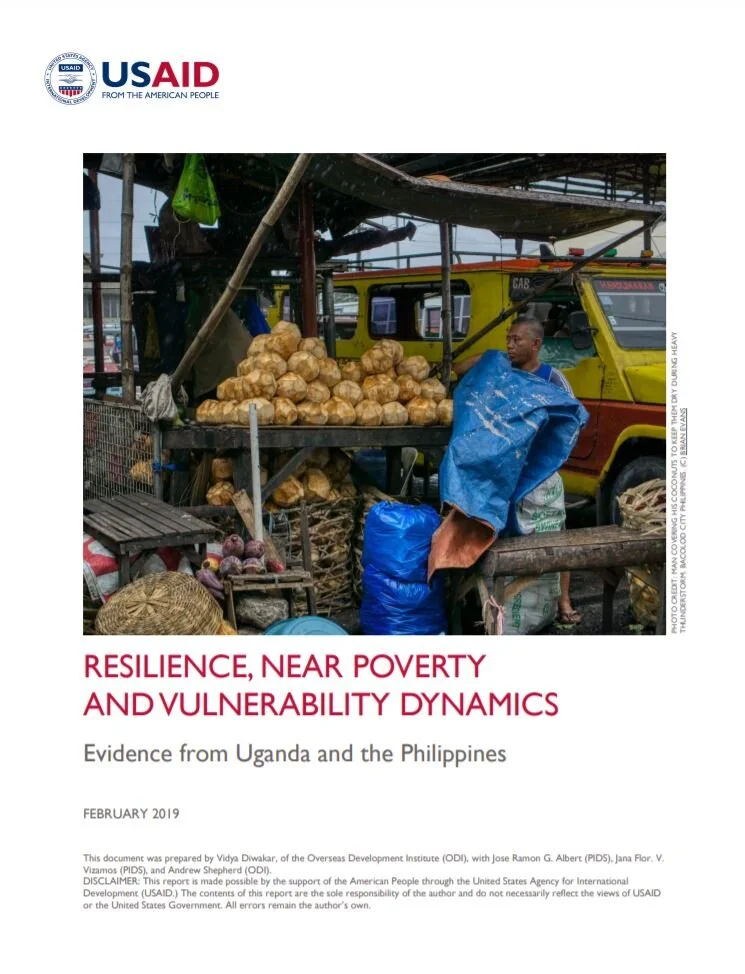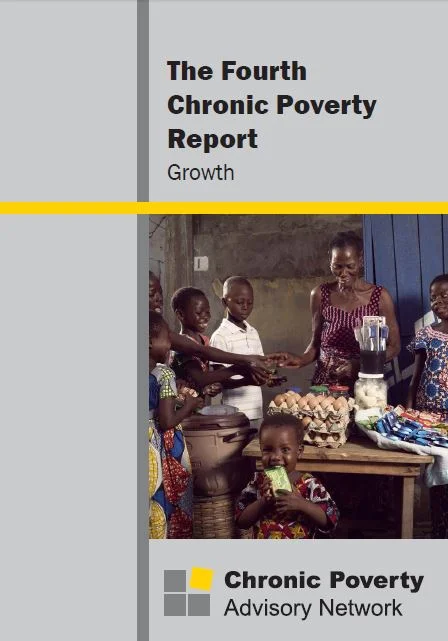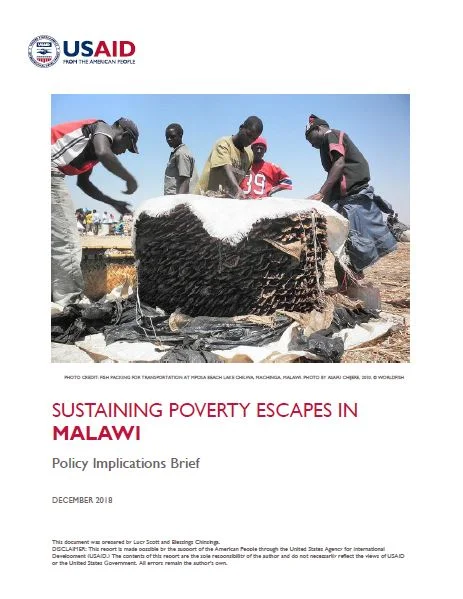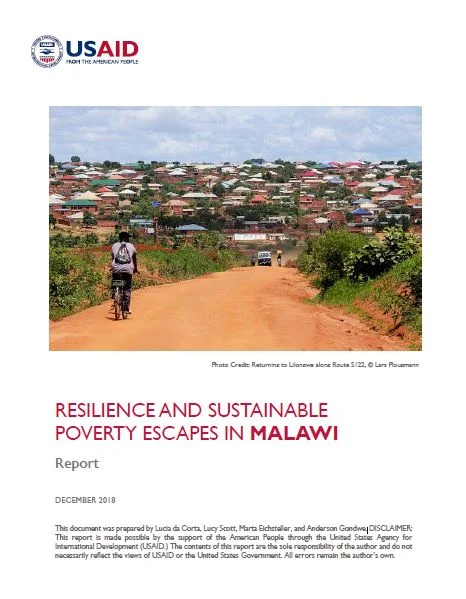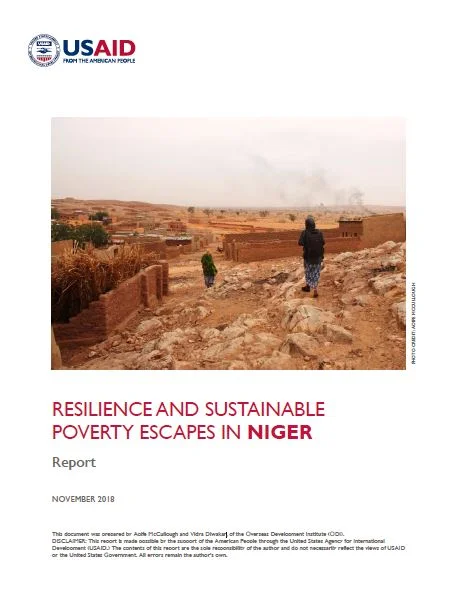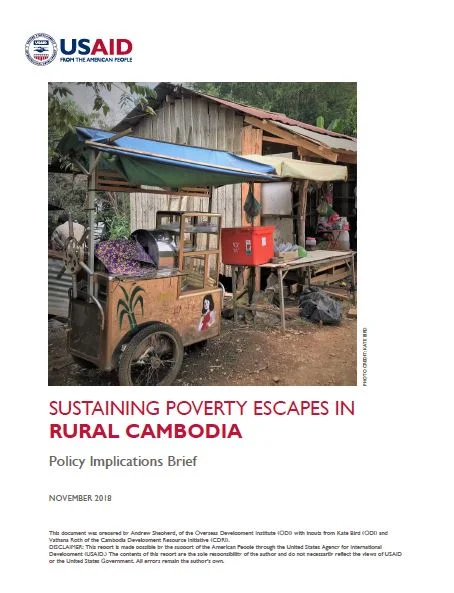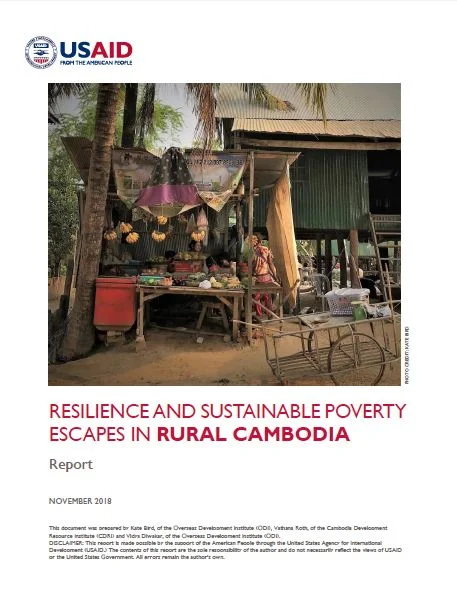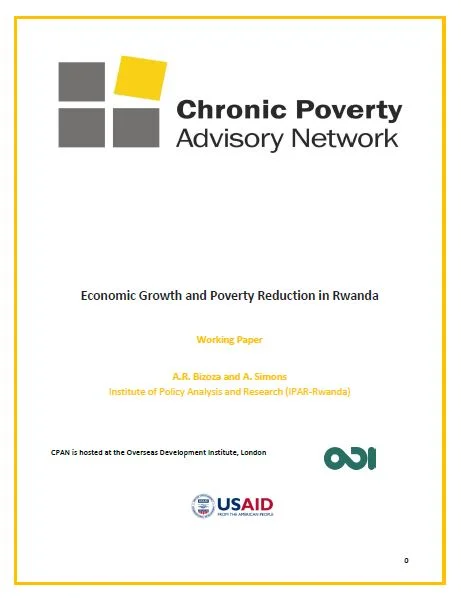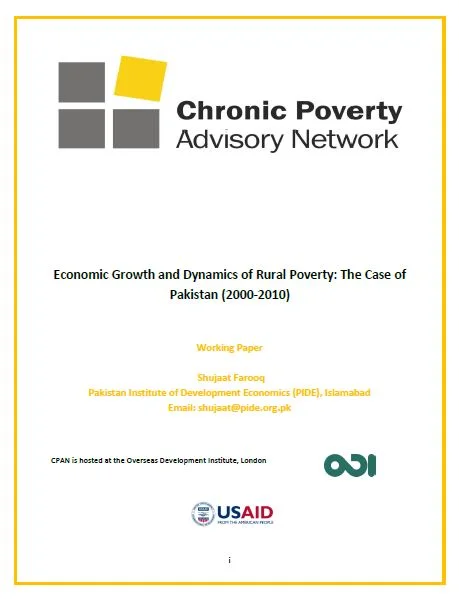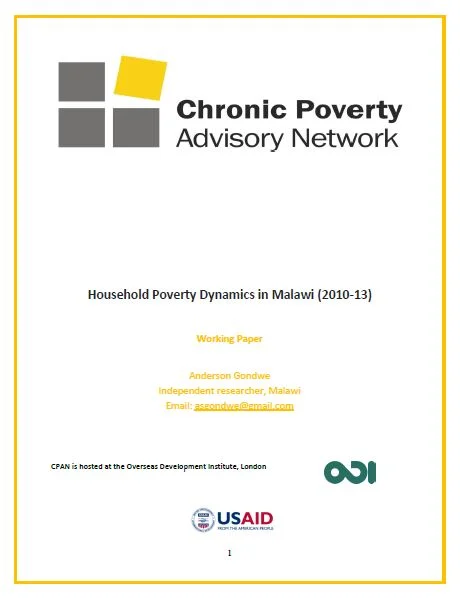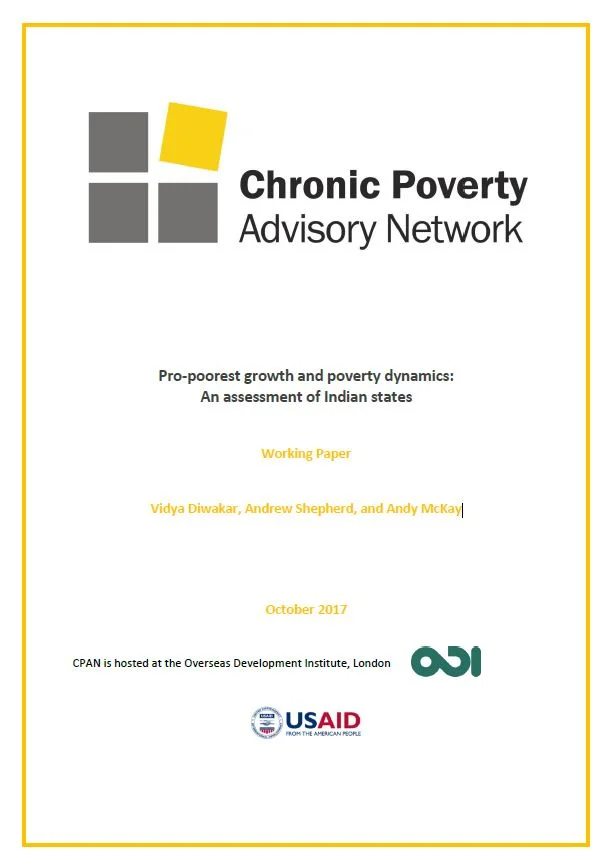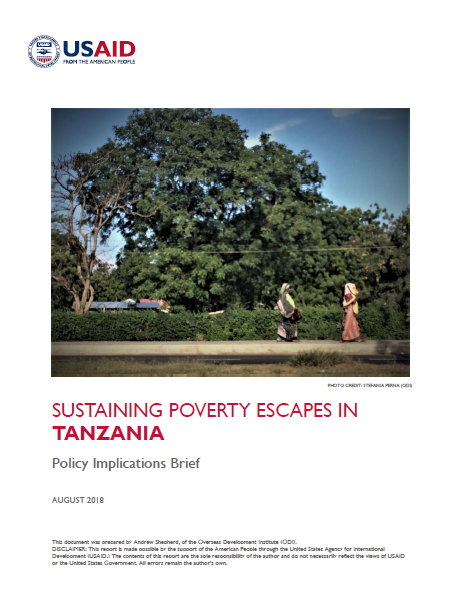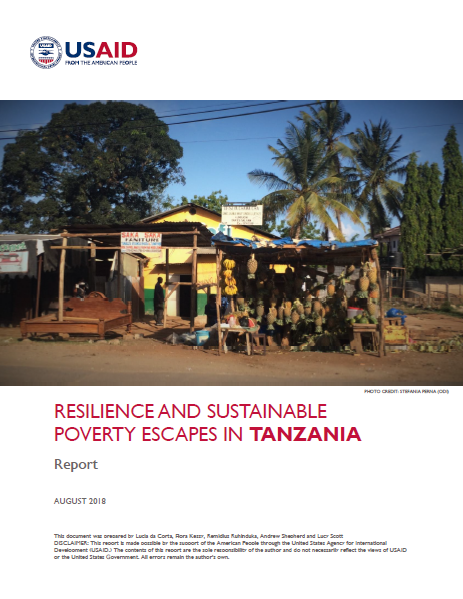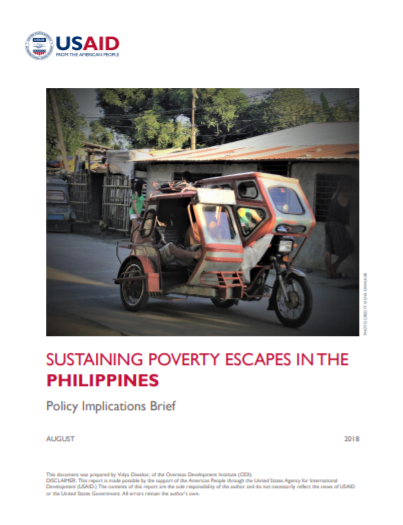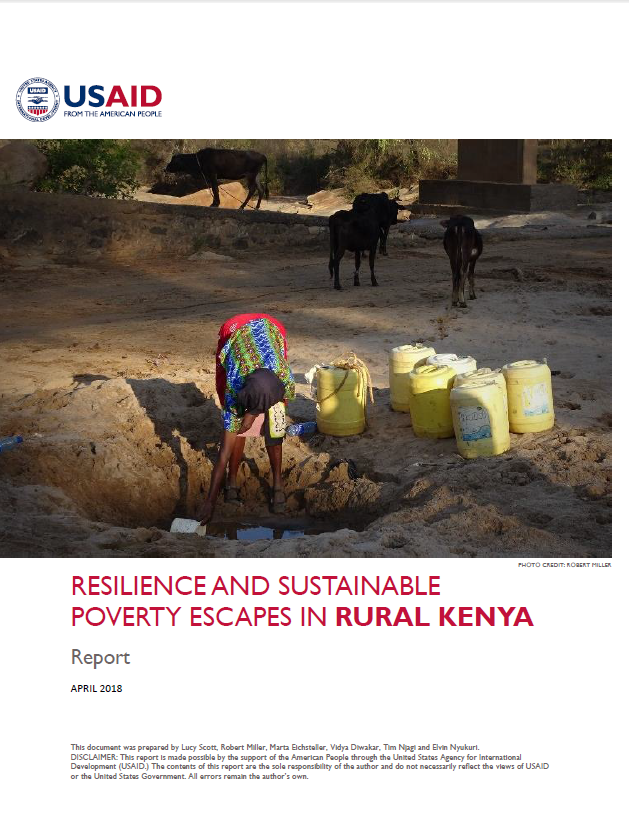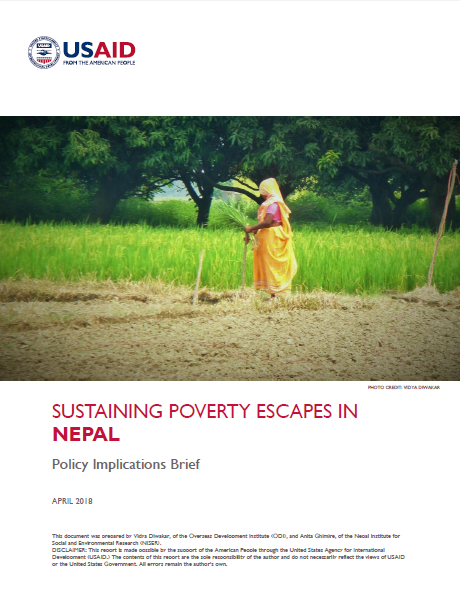The focus of this report is on household poverty escapes in rural Cambodia and explains why some households escape poverty and remain out of poverty (sustainable poverty escape, or resilience), while other households escape poverty only to fall back into poverty (transitory poverty escape) and still other descend into poverty for the first time (impoverishment).
Analysis of four rounds of the panel Agriculture, Rural Development and Poverty Reduction Survey in Cambodia spanning 2008-2017 for this case study reveals that just under one fifth of households escaped poverty sustainably, while almost the same share (20%) escaped only to fall back in, or became impoverished for the first time, over the study period. There is considerable dynamism in rural household’s poverty status with almost 4 in 5 households living in poverty during at least one of the 2008-17 survey years.
This report combines analysis from four rounds of the panel survey with qualitative research approaches, in particular, key informant interviews, life histories, and participatory wealth ranking in 6 study sites across Cambodia major agro-ecological zones to further investigate the drivers of changes in poverty status. It brings together:
New quantitative analysis of four rounds spanning 2008-2017 of the panel Agriculture, Rural Development and Poverty Reduction Survey in Cambodia.
Insights from 21 key informant interviews with development stakeholders in Phnom Penh, and interviews with knowledgeable community leaders in six village communities: Andong Trach and Khsach Chi Ros (both in Tonle Sap Plain), Ba Baong (Mekong Plain), Dang Kdar and Kanchor (both in Upland Plateau), and Kompong Tnoat (Coastal). These six sites were chosen as analysis of the Agriculture, Rural Development and Poverty Reduction Survey in Cambodia revealed they had high shares of households that were transitory escapers and sustained escapers, and as they are in USAID areas of interest.
Information from 36 focus group discussions (FGDs), separately for men and women and differentiated by poverty trajectory, was used to create historical participatory wealth ranking in the six study villages. These community FGDs provided a snapshot through which to better understand the meso-level drivers of mobility in wellbeing.
Life history interviews with 60 men and women in the six sites, identified from the panel data analysis and confirmed during the participatory wealth ranking as being on the different poverty trajectories. Note: all names of life history respondents have been anonymized in this report.
Wider literature on poverty reduction and poverty dynamics in Cambodia.
The results of the analysis show that Cambodia has experienced rapid and sustained growth. This has enabled poverty reduction, with strong growth in unskilled and semi-skilled employment. Investment in improved rural infrastructure (rural roads, electricity, water and sanitation and buildings for both education and medical facilities) has improved access to markets and to both education and health. A number of challenges remain still to address. More information can be find the related Policy Implication Brief.
Authors: Kate Bird and Vidya Diwakar
